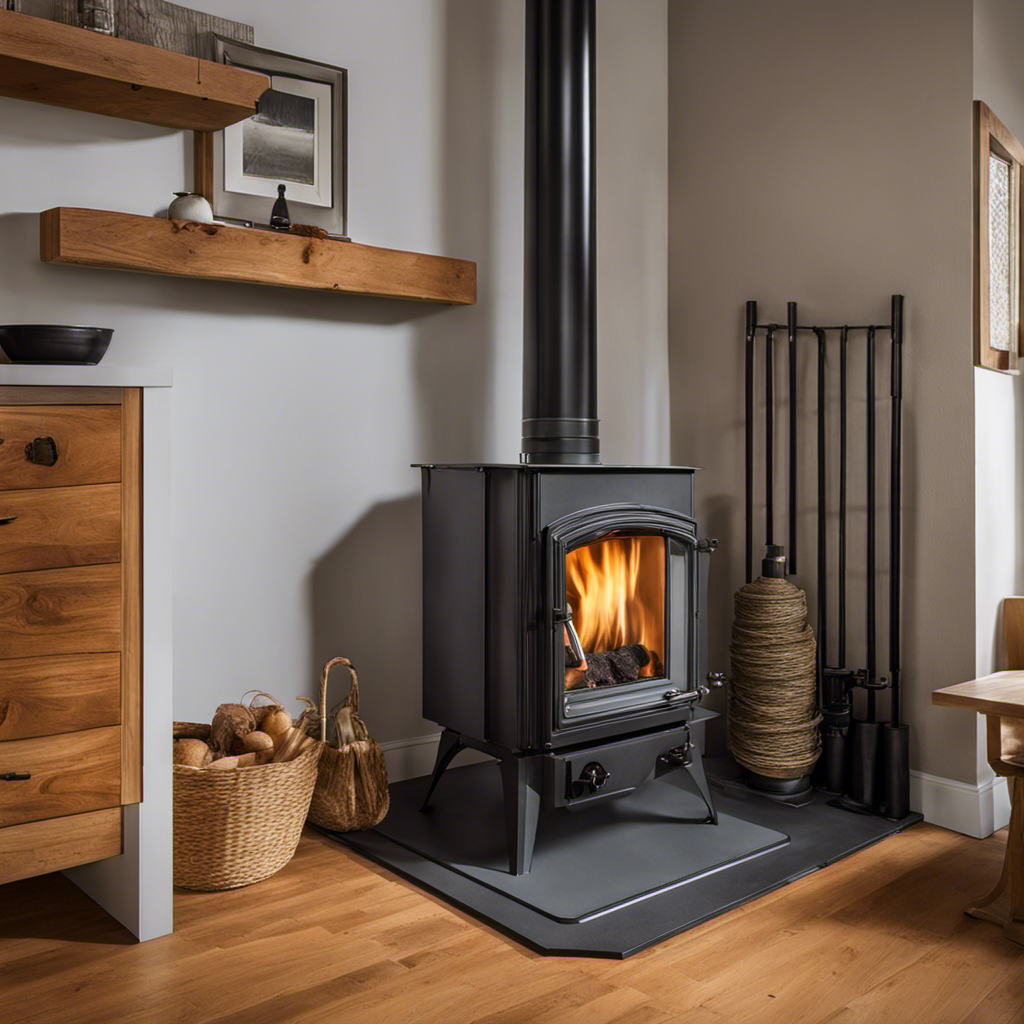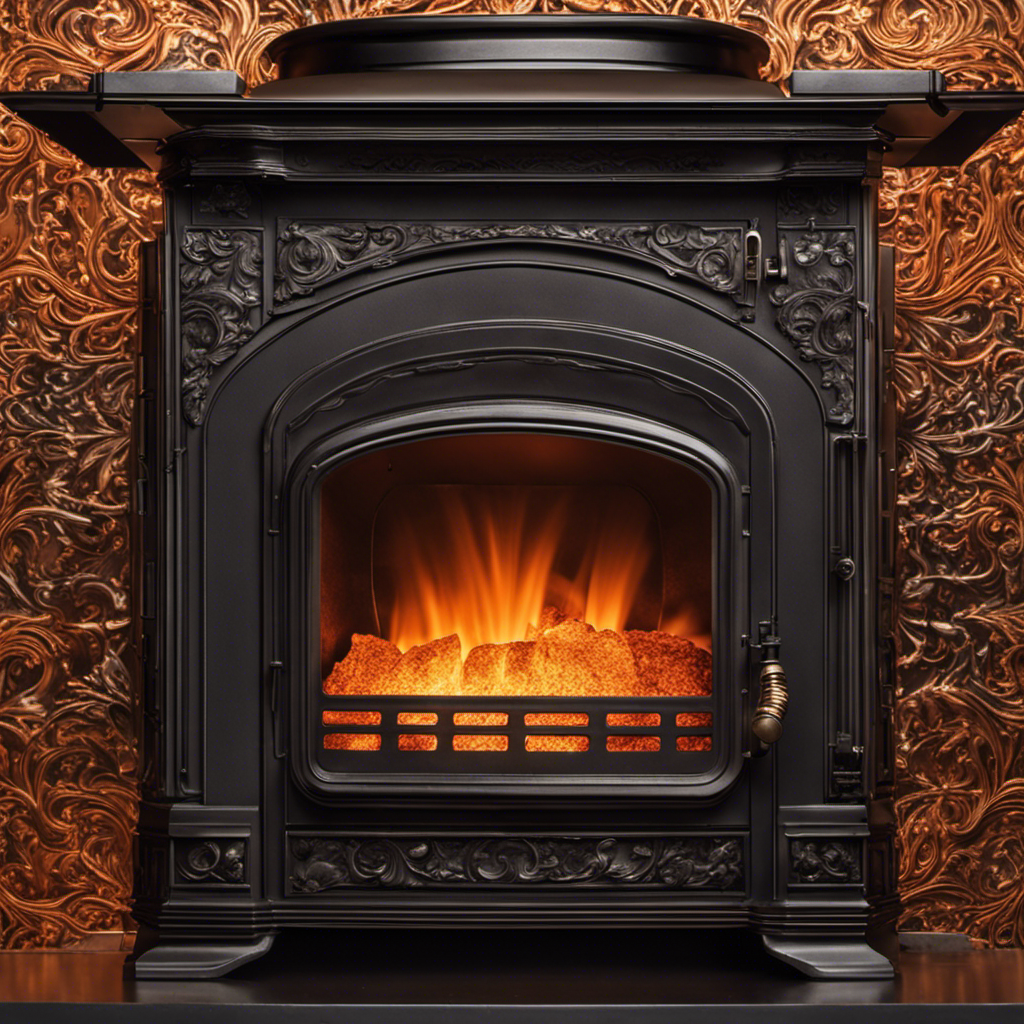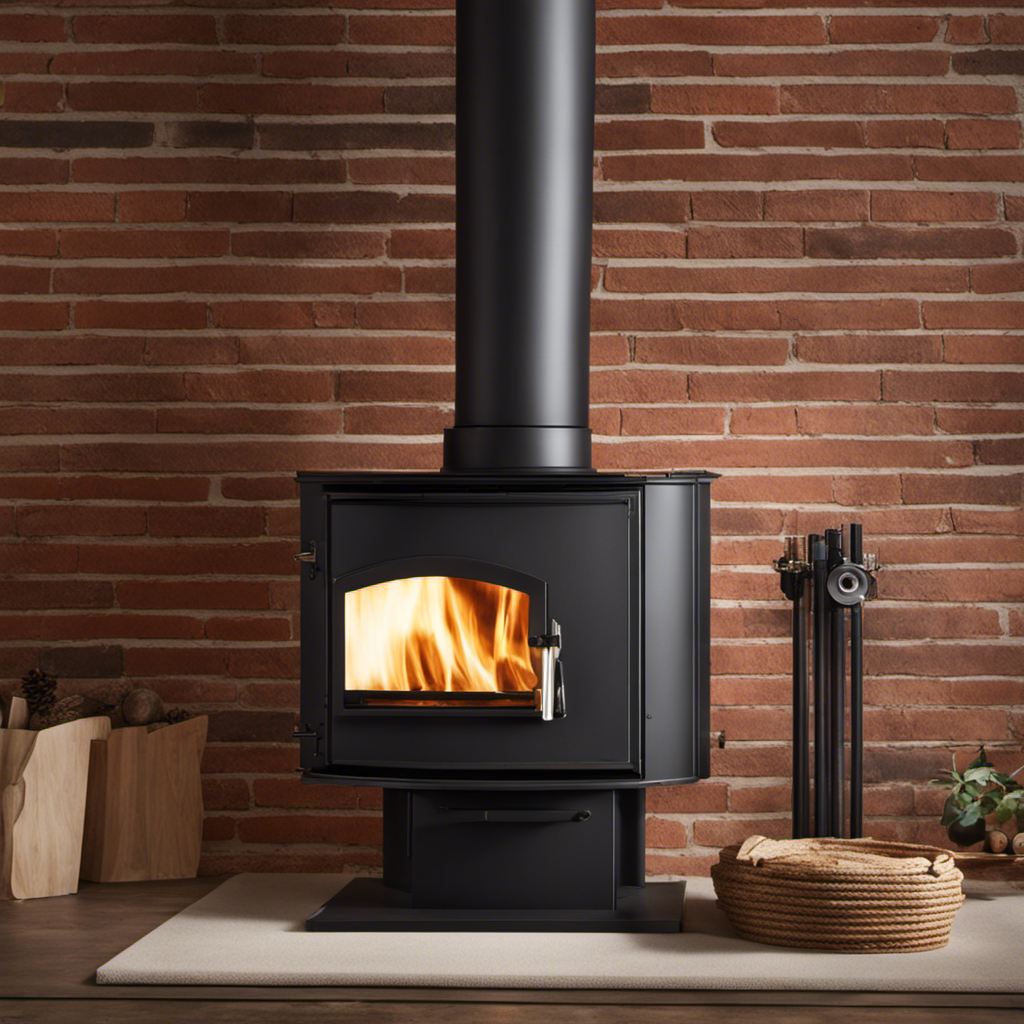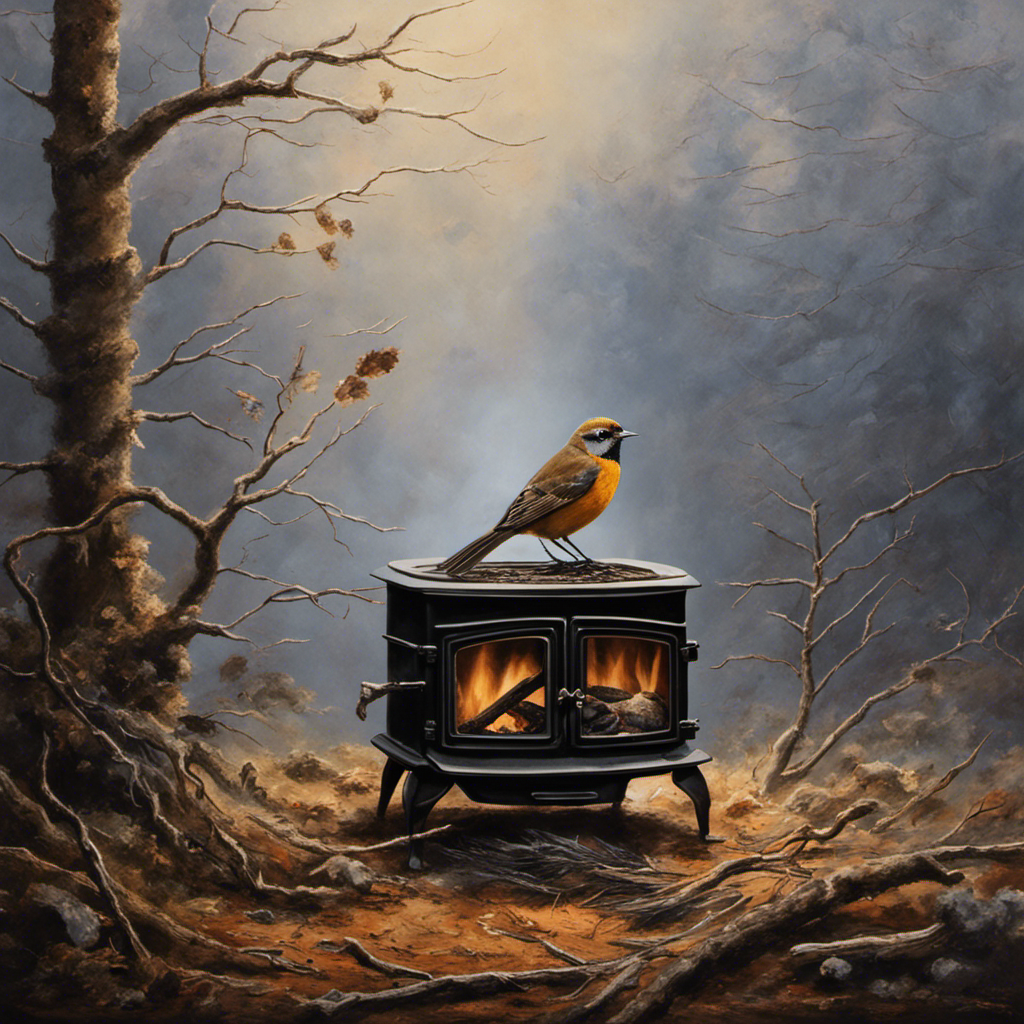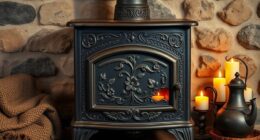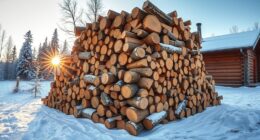Are you tired of facing the chilly winter weather? I have the ideal solution for you!
In this article, I’m going to show you how to connect your wood stove to the chimney. It may sound complicated, but trust me, it’s easier than you think.
With the right chimney pipe, proper preparation, and careful installation, you’ll have a cozy, warm home in no time.
So, let’s get started and banish the cold for good!
Key Takeaways
- Choose the right type of chimney pipe based on clearance requirements and desired level of insulation and safety
- Ensure proper preparation of the wood stove, including meeting clearance requirements and cleaning the chimney
- Carefully position and install the chimney pipe, following safety precautions and seeking professional help if needed
- Seal and insulate the connection using appropriate materials designed to withstand heat, regularly inspect and fix gaps or leaks.
Choosing the Right Chimney Pipe
I’m currently researching which chimney pipe to choose for my wood stove installation.
Selecting the appropriate chimney pipe is crucial for the safe and efficient operation of a wood stove. There are different types of wood stove chimneys available, and each has its own advantages and considerations. The most common types include single-wall, double-wall, and triple-wall chimneys.
Single-wall chimneys are the simplest and most affordable option. They’re made of a single layer of stainless steel or galvanized steel. However, they may require additional clearance from combustible materials.
Double-wall chimneys provide better insulation and are more efficient at retaining heat. They’ve an inner stainless steel pipe and an outer layer of air insulation. This design reduces the risk of heat transfer to nearby combustible materials.
Triple-wall chimneys offer the highest level of insulation and safety. They consist of three layers: an inner stainless steel pipe, an air insulation layer, and an outer stainless steel casing. This design provides excellent heat retention and minimizes the risk of overheating the surrounding walls.
When selecting a chimney pipe, it’s important to consider factors such as the stove’s heating capacity, the installation location, and local building codes. Consulting with a professional chimney installer is recommended to ensure the appropriate chimney pipe is selected for your specific wood stove installation.
Preparing the Wood Stove for Connection
Before connecting the wood stove to the chimney, I need to ensure that all necessary preparations have been made.
Preparing the wood stove for use involves several safety precautions for wood stove installation.
Firstly, I must check if the stove is placed on a non-combustible surface, such as a hearth pad, to prevent fire hazards.
Additionally, I need to verify that the stove’s clearance requirements are met, with enough space between the stove and any combustible materials.
Next, I’ll inspect the stovepipe for any damage or blockages, ensuring it’s securely connected to the stove.
Lastly, I’ll clean the chimney to remove any creosote buildup, reducing the risk of chimney fires.
Once these preparations are complete, I can proceed to installing the chimney pipe, which is the next crucial step in connecting the wood stove to the chimney.
Installing the Chimney Pipe
To properly connect the wood stove to the chimney, I’ll carefully position the chimney pipe between the stove and the wall. When installing the chimney pipe, it’s important to choose the right type of pipe for your stove.
There are different types of chimney pipes available, such as single-wall and double-wall pipes. Single-wall pipes are suitable for wood stoves with a clearance to combustibles, while double-wall pipes provide an extra layer of insulation and are ideal for stoves that require a closer clearance.
Safety precautions must be followed during installation to prevent any accidents. Ensure that the chimney pipe is securely fastened to the stove and the wall, and that it’s properly sealed to prevent any leakage.
Additionally, regular maintenance and inspections are crucial to ensure the safety and efficiency of the wood stove and chimney system.
Sealing and Insulating the Connection
I must ensure that the connection between the wood stove and chimney is properly sealed and insulated to prevent any heat loss or potential hazards. When it comes to sealing techniques, the key is to create an airtight and secure connection.
One common mistake isn’t using the right materials for the job. I recommend using high-temperature silicone sealant or fire-resistant rope to seal the joints. These materials are designed to withstand the heat and ensure a tight seal.
Additionally, it’s important to inspect the connection regularly and fix any gaps or leaks that may develop over time. Proper insulation is also crucial to prevent heat loss. Using insulation sleeves or blankets around the chimney pipe can help retain the heat and improve the stove’s efficiency.
Testing and Maintaining the Wood Stove-Chimney Connection
While regularly inspecting and testing the wood stove-chimney connection, I can ensure that it remains secure and functioning properly. Troubleshooting common issues and ensuring proper ventilation are critical aspects of maintaining this connection.
One common issue is a loose connection between the wood stove and the chimney pipe. This can lead to smoke leakage and decreased efficiency. To troubleshoot this problem, I check for any gaps or looseness in the connection and tighten the screws or clamps if necessary.
Another common issue is a blocked or obstructed chimney. This can cause poor draft and inefficient burning. To ensure proper ventilation, I inspect the chimney for any debris or creosote buildup and clean it if needed.
Regular maintenance and attention to these details will help to keep the wood stove-chimney connection functioning optimally.
Frequently Asked Questions
How Do I Determine the Correct Size Chimney Pipe for My Wood Stove?
To determine the correct size chimney pipe for my wood stove, I need to consider the stove’s flue collar size and the manufacturer’s recommendations. Proper sizing ensures efficient and safe venting of the stove’s smoke and gases.
Can I Use an Existing Chimney for My Wood Stove or Do I Need to Install a New One?
I can use an existing chimney for my wood stove, but I may need to install a new one if the existing chimney doesn’t meet the necessary requirements for proper ventilation and safety.
What Are Some Common Signs of a Faulty Wood Stove-Chimney Connection?
Common causes of a faulty wood stove chimney connection include improper installation and lack of maintenance. To troubleshoot and fix the issue, inspect the connection for gaps or leaks, ensure proper clearance, and clean the chimney regularly.
Are There Any Specific Regulations or Codes I Need to Follow When Connecting a Wood Stove to a Chimney?
Are there specific regulations or codes I need to follow when connecting a wood stove to a chimney? Yes, building permits and safety regulations must be adhered to ensure proper installation and prevent potential hazards.
How Often Should I Clean and Inspect the Wood Stove-Chimney Connection to Ensure It Is Functioning Properly?
To ensure proper functioning, the wood stove-chimney connection should be cleaned and inspected regularly. Cleaning frequency will depend on usage, but a general guideline is at least once a year. Proper inspection involves checking for any signs of damage or blockage.
Conclusion
In the dance of warmth and comfort, connecting a wood stove to a chimney requires careful steps.
Choose the right chimney pipe, prepare the stove, and install the pipe with precision.
Seal and insulate the connection, like wrapping a gift with care.
Finally, test and maintain the wood stove-chimney connection to ensure its harmonious performance.
With these steps, you can confidently embrace the cozy embrace of your wood stove, knowing that the dance between fire and chimney is in perfect sync.
Logan’s affair with adventure began in childhood. He hailed from a small town where vast forests bordered one side and endless shores stretched on the other. His days were spent exploring uncharted woods, climbing tall trees, or listening to the tales of old sailors. This early immersion in a world brimming with stories and mysteries became the foundation of his passion for writing.

